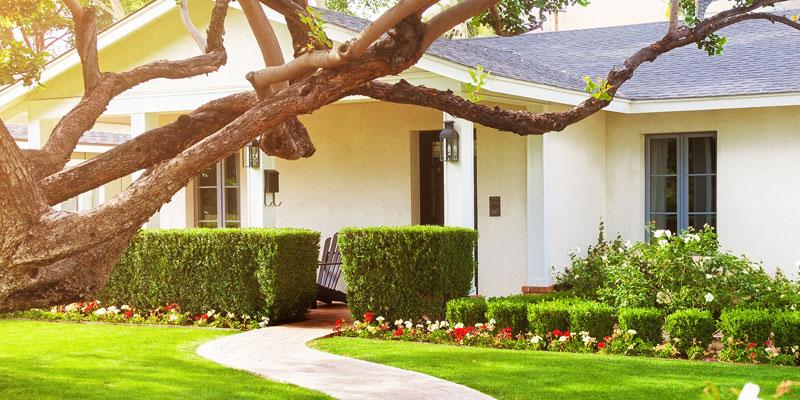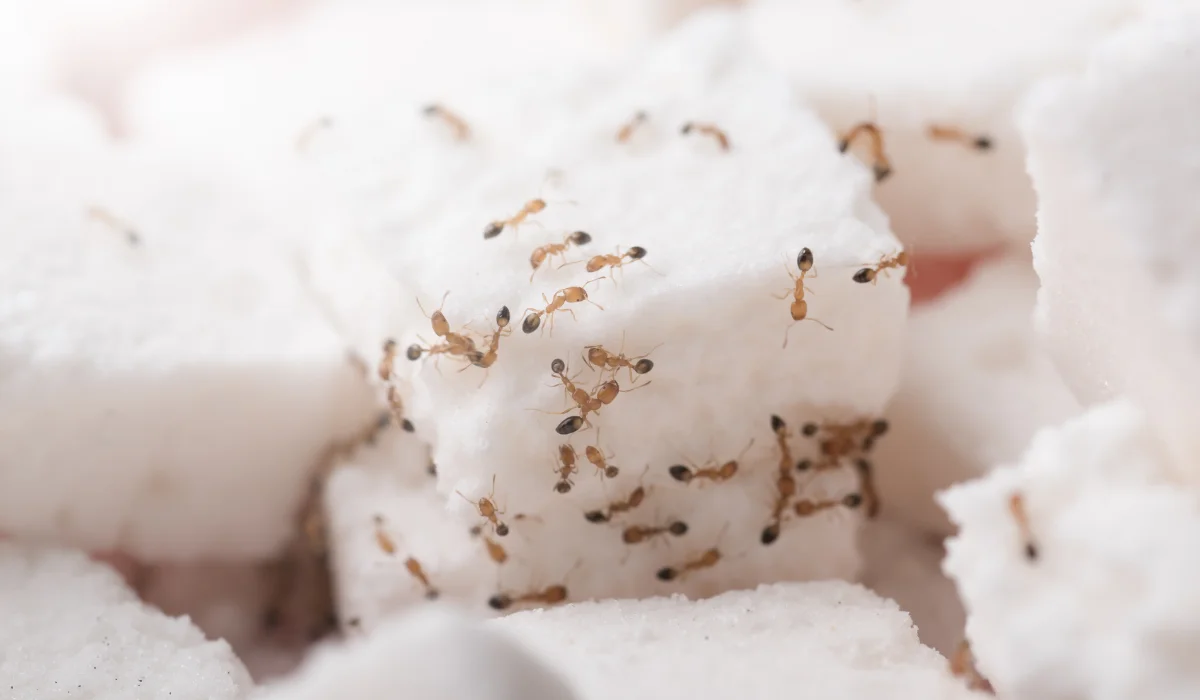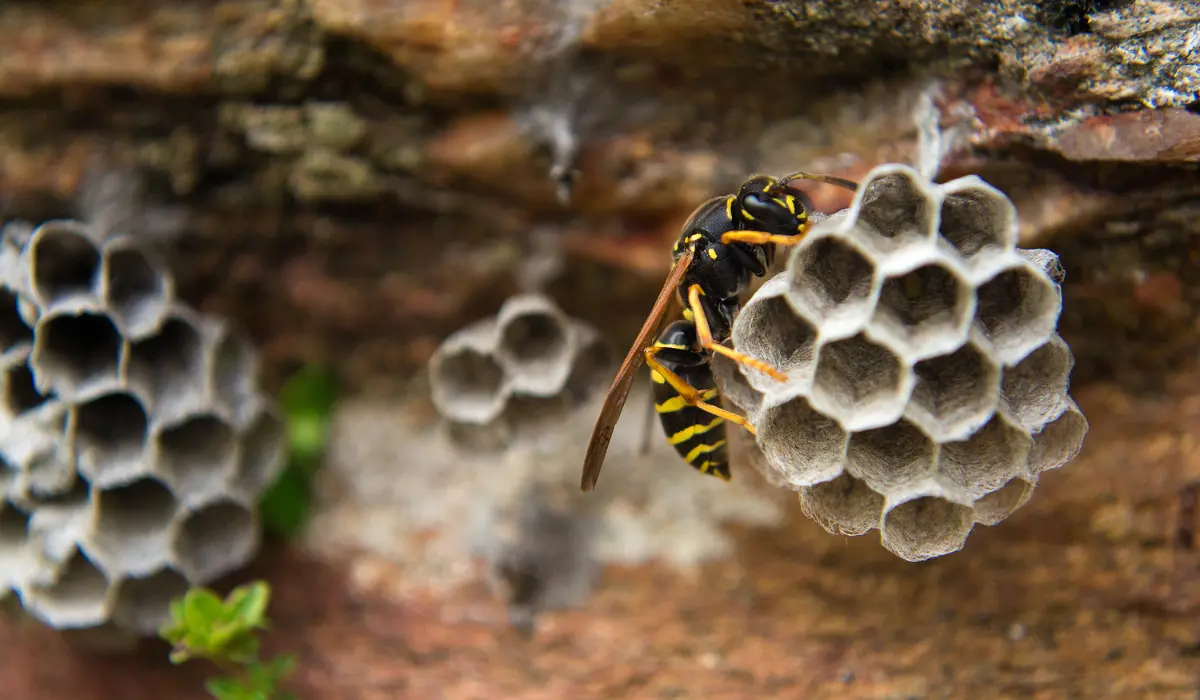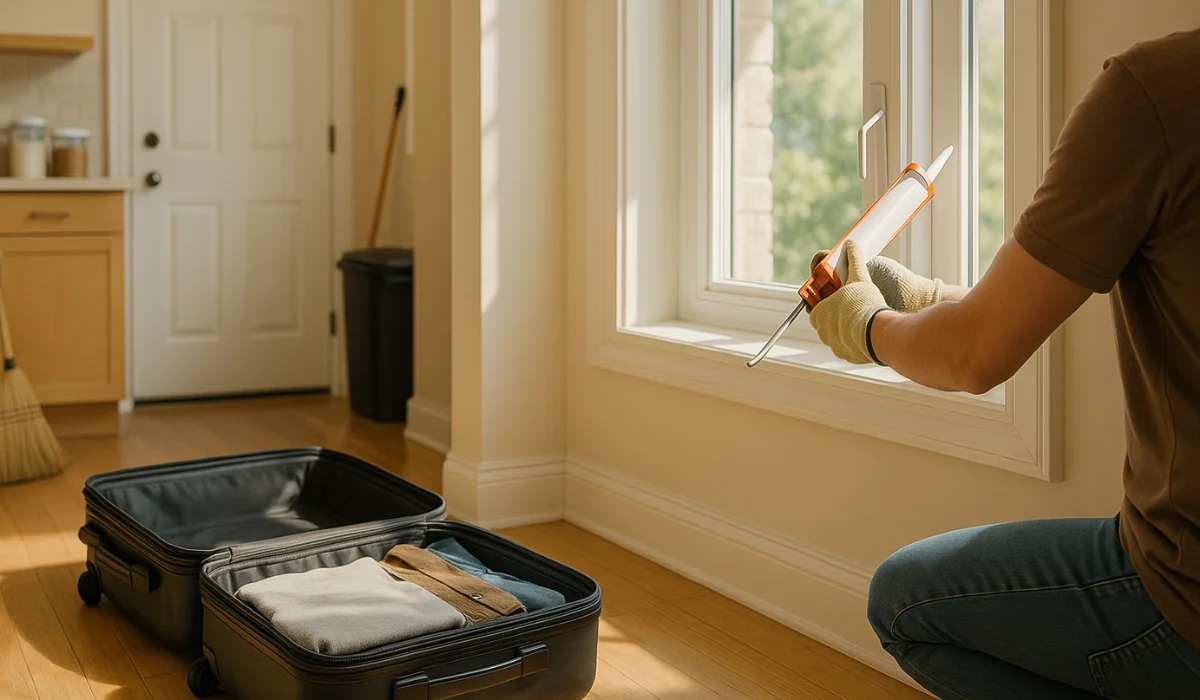Termites are sneaky bugs that munch on your home, often silently wrecking it from the inside. To battle these pests, it’s key to figure out what type of termite is causing trouble—subterranean, drywood, or dampwood.
Getting to grips with termite tactics and treatment options is a big deal, but understanding them can really help you protect your home. Stick around to learn how to keep these sneaky critters at bay!
Key Takeaways
- Professional termite treatment may involve different methods to effectively target various termite species, such as bait systems, termiticides, fumigation, and physical barriers.
- You should prepare your homes before treatment by clearing access to infested areas, moving items away from walls, and ensuring pet safety.
- Maintaining your home, such as removing food sources near the foundation, is crucial to prevent reinfestation after treatment.
- To prevent extensive termite damage, you must recognize early signs of termite presence, such as mud tubes or hollow-sounding wood.
- LaJaunie’s Pest Control provides immediate, comprehensive services for termite issues, including inspections, cost estimates, and various treatment methods for homes and commercial properties.
PROFESSIONAL TERMITE TREATMENT PROCESSES
When it comes to safeguarding your home against termites, professional termite treatment affords reliable and effective solutions for prevention and eradication.
Overview of Termite Treatment Methods
Termite control involves targeting the unique behaviors of different termite species, including:
- Subterranean termites
- Drywood termites
- Formosan termites
- Dampwood termites
Like us at LaJaunie’s Pest Control, professional pest control companies use a combination of methods for comprehensive termite protection.
Here’s an overview of the different types of termite treatments professionals use.
| Treatment Method | Description |
| Bait Systems | Utilize bait stations with termite bait to eliminate colonies over time. |
| Termiticides | Apply EPA-approved chemical pesticides to create chemical barriers in the soil and prevent entry. |
| Fumigation | Engulf the structure in gas to eradicate active termite infestations. |
| Physical Barriers | Implement preventative measures during construction to block termite entry. |
PREPARATION STEPS BEFORE TERMITE TREATMENT
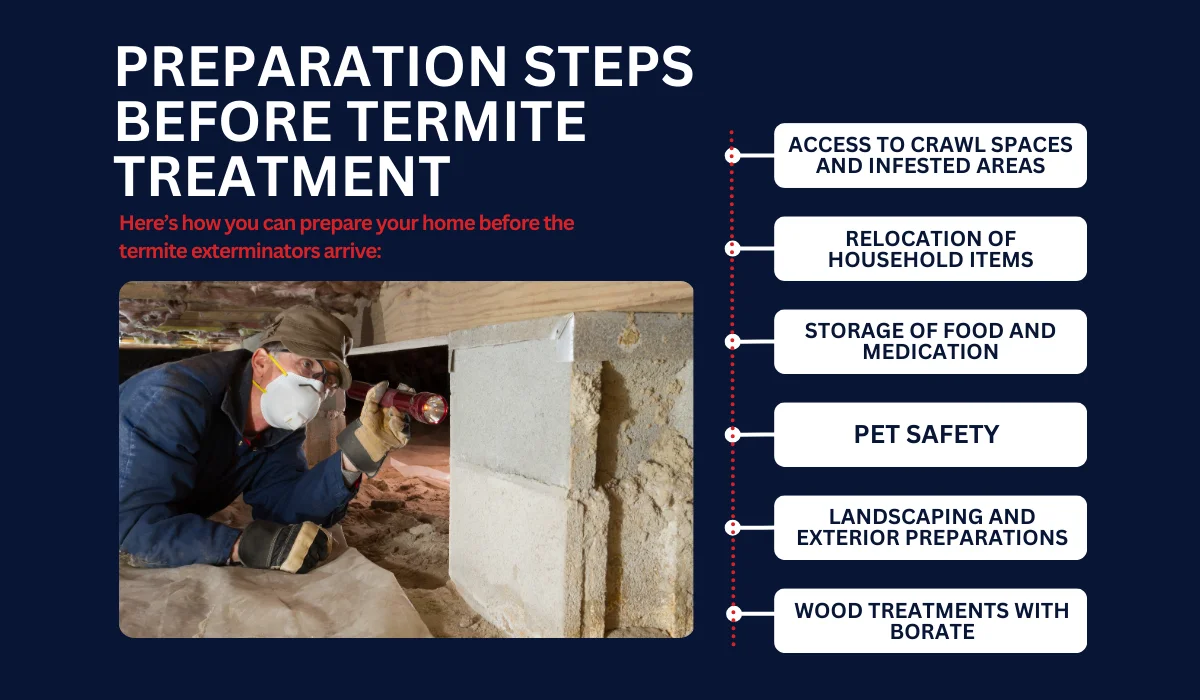
Taking the time to prepare your home properly can enhance the effectiveness of termite treatment and protect your belongings.
As homeowners in Louisiana, here’s how you can prepare your home before the termite exterminators arrive:
1. Access to Crawl Spaces and Infested Areas
- Clear any blockages for exterminator access.
- Ensure that areas such as basements and attics are easily accessible.
2. Relocation of Household Items
- Move furniture and appliances away from walls.
- Protect or remove personal belongings, especially in treatment zones.
3. Storage of Food and Medication
- Store away food, dishes, and medications in sealed containers.
- If doing DIY treatment, prevent contamination by safely covering kitchen areas.
4. Pet Safety
- Make arrangements for pets to be away during treatment.
- Cover fish tanks and remove birds from the treatment site to avoid chemical exposure.
5. Landscaping and Exterior Preparations
- Trim back vegetation and landscaping that touches the home for external treatments.
- Remove any items against the home’s exterior that may interfere with the treatment.
6. Wood Treatments with Borate
- If using borate treatments, ensure wood surfaces are exposed and ready for application.
DURING TERMITE TREATMENT
Pre-Treatment
At LaJaunie’s Pest Control, we offer an expedited same-day service for these pre-treatments, ensuring compliance with building standards.
Our unique treatment includes a blue dye, making verification by building inspectors straightforward. We also extend our services to various projects and properties.
Here’s a closer look at our additional services:
| Service Type | Properties Covered |
| Home Additions & Remodels | Residences undergoing expansion or renovation |
| Commercial & Industrial | Business and industrial sites |
| HOAs & Government Buildings | Managed residential communities and public buildings |
Treatment Implementation
At LaJaunie’s Pest Control, we initially dispatch an outside sales representative to inspect and document your termite problem.
The representative offers termite treatment cost quotes. Once payment is confirmed, we typically send a technician within 24 hours and start the termite treatment.
Here’s a closer look at our steps when treating specific areas:
Tree Stumps
Termite risks from tree stumps or dead trees on your property are significant. Our immediate action includes:
- Removing stumps or dead trees.
- We also address potential whitefly damage to trees, reducing dead wood that attracts termites.
Wood Infestations
Termite presence in house woodwork necessitates our intervention. Our services include:
- Direct liquid treatments.
- Above-ground and in-ground bait stations.
- No-tent control, insecticide trenching, and pre-treatments to eradicate termites effectively.
Soil Infestations
Finding termites in soil indicates potential subterranean termite issues. Our soil treatments involve:
- Termite bait stations and trenching for effective elimination.
- Pre-treatments applied to the soil surface before laying concrete foundations to prevent future infestations.
POST-TREATMENT CARE AND MAINTENANCE
Maintaining Your Home Post-Treatment
Termite prevention is crucial to keep your home termite-free after our treatment. Here are some specific maintenance tips you can follow:
| Tips | Recommended Action |
| Remove Food Sources | Keep lumber, firewood, and mulch away from the home’s foundation. |
| Address Water Collection | Fix leaky faucets, pipes, and AC units to prevent water accumulation around the foundation. |
| Maintain Gutters | Clean gutters regularly to avoid water overflow and damage to your home’s structure. |
| Indoor Humidity Reduction | Use exhaust fans in kitchens and bathrooms to reduce indoor humidity. |
| Soil and Foundation | Maintain a barrier of 12-18 inches between the foundation and any soil or mulch using crushed rock. |
| Plant Management | Avoid dense planting near the home’s foundation to allow sunlight to keep the soil dry. |
| Wood Debris Removal | Regularly clear your property of damp wood, leaf piles, and tree stumps that attract termites. |
| Foundation and Wall Repairs | Seal cracks or damage in the foundation, walls, or roof to block termite entry points. |
| Wood Inspection | Inspect antique wooden furniture and other treated wood items before bringing them inside your home. |
Scheduling Follow-Up Termite Inspections
Follow-up inspections are non-negotiable to ensure the treatment is successful and prevent future termite colonies from forming.
As part of our pest control service, we come out annually to inspect and replace (as needed) the bait stations and check for termite activity and conducive conditions that can lead to re-infestation.
SIGNS YOU NEED TERMITE TREATMENT
Recognizing the early signs of termites is essential to prevent extensive damage. Your keen eye can reveal common warning signals, such as:
- Mud Tubes: These pencil-sized tunnels near the foundation of a home are a definitive sign of subterranean termites.
- Wood Damage: Termites feast on cellulose found in wood, so wood that sounds hollow when tapped may indicate an issue.
- Termite Droppings: Drywood termites leave behind pellet-like droppings near wooden structures.
- Discarded Wings: Often found near windows or doors, discarded wings suggest termites have entered the home to mate and establish a new colony.
- Swarmers: A swarm of winged insects in or around the home could be reproductive termites looking to start a new colony.
- Blisters in Wood Flooring: These can resemble water damage but may be caused by termites feeding within or beneath.
- Cracked or Distorted Paint: Uneven or bubbling paint may hide termite activity.
- Sightings of Antennae or Termites Themselves: Any visible termites or antennae can indicate an active infestation.
SHOULD YOU GET IN TOUCH WITH PEST CONTROL PROFESSIONALS NOW?
Deciding when to call pest control can be a tricky business. But if you spot the tell-tale signs of termite damage or are in a challenging situation of complex infestation with bed bugs, carpenter ants, and cockroaches, it’s time to ring up pest control services.
Whether you’re in New Orleans or Baton Rouge, seeking expert help should be easy. For immediate intervention for a severe infestation, let Lajaunie’s termite control specialists tailor a solution that’s right for your home.
For more information about the areas we service, visit our location page.
 By: LaJaunie's Pest Control
By: LaJaunie's Pest Control 